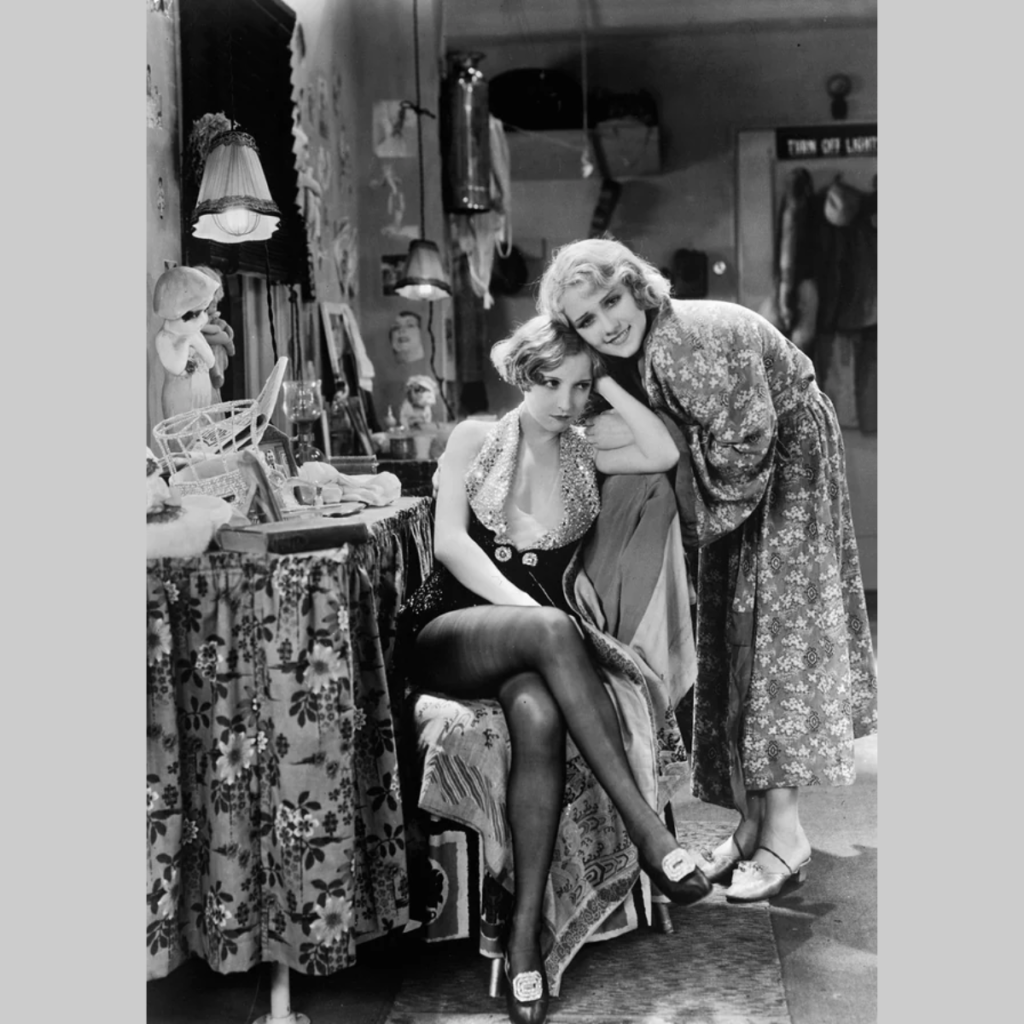
At the Gleason Music Publishing Company, several acts rehearse their musical numbers, with Eddie Kearns (Charles King) performing his new song “Broadway Melody” for supervisor Jimmy. Meanwhile, at a theatrical hotel on 46th street in New York, sisters Hank (Bessie Love) and Queenie Mahoney (Anita Page) fret over their pennilessness, consternated with the competition in the bustling city. Brunette Hank doubles as the business manager, while blonde Queenie gets by on her looks. They’re a vaudeville twosome with hopes for superstardom, but far too many sister acts frequent the stage. They turn down stuttering Uncle Jed’s (Jed Prouty) offer to showcase them elsewhere, holding out for an opportunity to make it big locally, like the currently successful Duncan girls, who similarly came from nothing. Eddie meets them in their room to inform them that his song has been purchased and contributes to the title of Francis Zanfield’s (Eddie Kane) new revue – and that the Mahoneys will take part. Eddie and Hank are engaged, but decide to postpone their marriage until after they all have an opportunity to become famous.

At Zanfield’s Theatre, stern George oversees rehearsals, where the Mahoney sisters get a few brief minutes to audition. But a jealous, troublemaking chorus girl sabotages their dance routine, nearly ruining their chance to take part in the revue. The following morning, a full dress rehearsal is enacted, but Eddie’s sequence is edited for pacing, removing the Mahoney sisters completely. When Queenie replaces an injured showgirl at the last minute, she’s spotted by upper crust playboy Jacques Warriner (Kenneth Thompson), who immediately asks her to dinner. As Queenie strikes up an unapproved, controversial romance with Warriner, Eddie realizes he’s also in love with the budding blonde (serenading her with the song “You Were Meant for Me”).

There’s a very plain story at work, ultimately designed to string together singing and dancing performances. The primary problem is that it frequently interferes with the musical numbers and drags out the running time, specifically when a lavish birthday party is thrown and when love triangle melodrama overbearingly dictates the character’s actions – supplemented by tedious bickering. There’s no comic relief to punctuate the tragedy and by the time the finale rolls around, it’s nothing more than each program feature executed one after the other (starting with the recognizable “The Wedding of the Painted Doll”), putting the preceding plot on hold. The only truly amusing aspect is Hank and her continual, selfless sacrificing for her fluttered, oblivious sister, which lends to the melancholy but satisfactory final scene.
Plenty of clashing egos and nervous entertainers populate the hectic spotlight, demonstrating the turbulent atmosphere of New York celebrity, though even in the late ‘20s the theme seems fatigued. “The Broadway Melody” is principally a piece known for its historical significance, winning the 1929 Academy Award for Best Picture and considered the first all-talking musical (and the first released by MGM, coincidentally competing against “The Hollywood Revue of 1929,” formatted with even less of a plot), establishing a template for future releases mimicking the formula. But the dancing isn’t particularly athletic or flamboyant, the costumes aren’t dramatically overwrought or vivid, the acting isn’t ardent or believable (save for Bessie Love), and the singing, especially in the case of the title tune, is unduly repetitive during the course of the film.